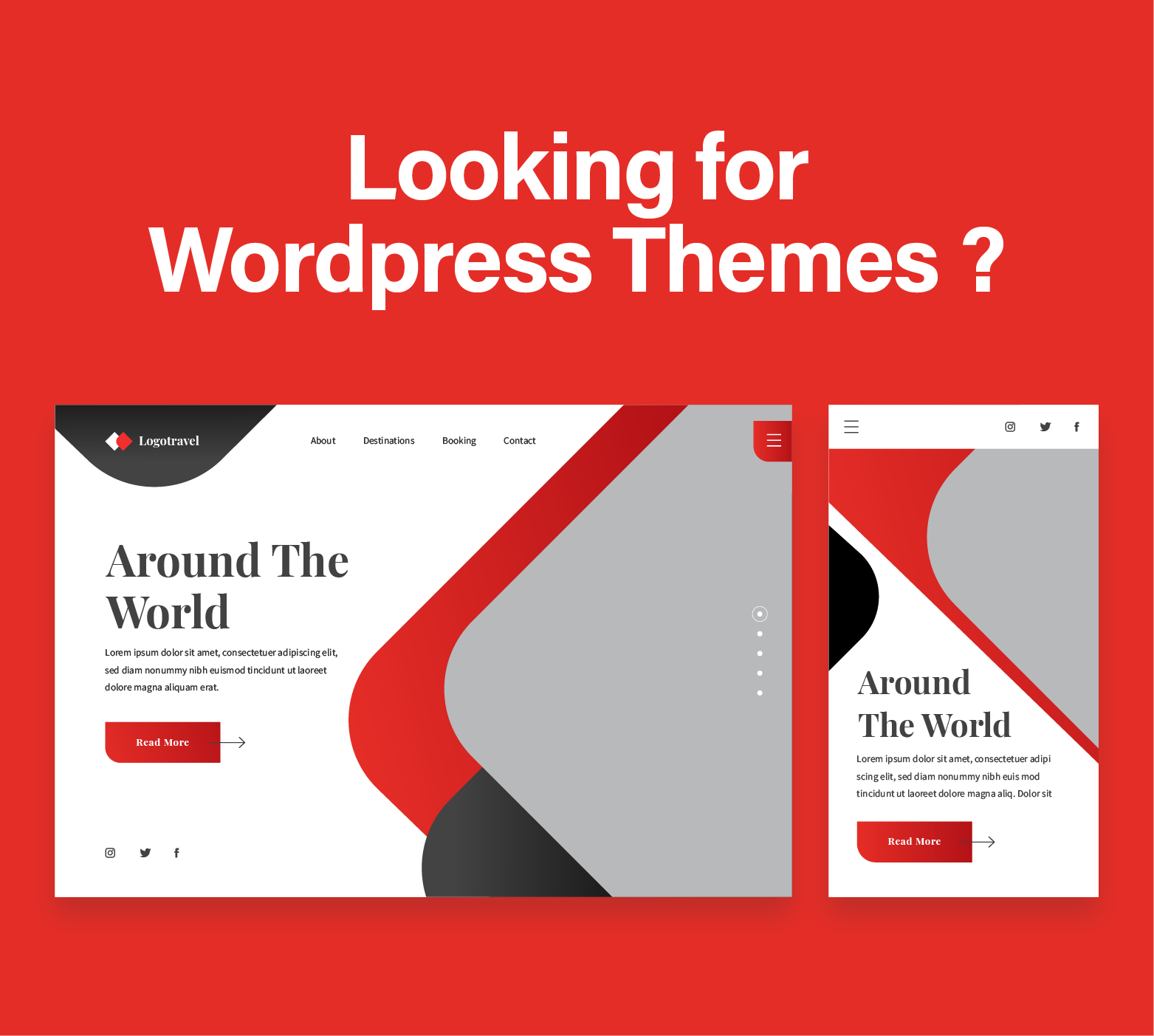When building a website, two popular options are WordPress and GoDaddy Website Builder. While both platforms aim to simplify website creation, they cater to different types of users and offer varying levels of control, customization, and scalability. WordPress is a content management system (CMS) that gives users extensive control over the design and functionality of their websites, while GoDaddy Website Builder is an all-in-one tool aimed at beginners who want a quick, easy solution for getting online.
1. Ease of Use
GoDaddy Website Builder is designed for simplicity, offering a drag-and-drop interface that allows users to create a website quickly without any coding knowledge. It provides pre-designed templates and a user-friendly editor, making it perfect for those who need a basic website up and running in no time. For small business owners, freelancers, or individuals with limited technical skills, GoDaddy’s builder is easy to navigate and streamlines the entire website creation process.
They even offer sites like car dealers, or classified ads, or real estate or e-commerce, but we really think that using wordpress for all these is a better idea rather than using godaddy. Contact us for affordable web design services if you want to build these sites.
WordPress, on the other hand, requires a bit more effort to set up. While the basic installation is simple, the real power of WordPress comes from its flexibility and vast ecosystem of themes, plugins, and customizations.
This can make it more complex for beginners, but once learned, WordPress offers far more control over your website. For users willing to invest time in learning the platform, WordPress provides endless possibilities for customization.
2. Customization and Flexibility
WordPress is known for its flexibility. With access to over 55,000 plugins and thousands of themes, users can customize their sites to suit nearly any need. Whether you’re building a blog, an e-commerce store, or a complex business website, WordPress allows for a high level of personalization. You can also use custom code, such as HTML, CSS, and JavaScript, to further tailor the site’s design and functionality.
GoDaddy Website Builder offers limited customization compared to WordPress. While it includes templates and pre-built elements, users are confined to the options provided within the platform. This can be a drawback for those looking to create a truly unique website or needing specific functionality that GoDaddy’s builder doesn’t support. For example, it lacks the extensive plugin ecosystem that WordPress offers, meaning users may outgrow its capabilities as their site grows.
3. E-Commerce and Business Features
WordPress is a powerful platform for e-commerce websites, particularly when paired with the WooCommerce plugin. WooCommerce transforms WordPress into a full-fledged online store, allowing for extensive product listings, payment gateway integrations, inventory management, and more. This makes WordPress ideal for businesses looking to scale and customize their online store as they grow.
GoDaddy Website Builder also offers e-commerce functionality, but it is more basic. You can sell products, integrate with payment processors, and manage inventory, but the features are limited compared to WooCommerce. For small businesses with simple needs, GoDaddy’s e-commerce tools may be sufficient, but larger stores or businesses with specific requirements may find the platform restrictive.
4. SEO and Performance
WordPress excels when it comes to SEO (Search Engine Optimization). With plugins like Yoast SEO and Rank Math, users can optimize their site’s content, meta tags, and structure to improve search engine rankings. WordPress also provides full control over how your site loads, meaning you can implement caching, image optimization, and performance tweaks to improve speed.
GoDaddy Website Builder includes some basic SEO features, such as keyword optimization and meta tag editing, but it doesn’t offer the same level of control as WordPress. While you can still perform fundamental SEO tasks, advanced users may find the options limiting, especially when it comes to technical SEO or optimizing for complex sites.
Conclusion: WordPress or GoDaddy Website Builder?
When deciding between WordPress and GoDaddy Website Builder, it ultimately comes down to your needs and experience level. If you’re looking for a quick and easy way to get a basic website online with minimal effort, GoDaddy Website Builder is a solid choice. It’s user-friendly and handles everything from hosting to design in one platform.
However, if you need more control, customization, and scalability, WordPress is the better option. It provides a robust platform for building anything from blogs to fully customizable online stores, with endless options for extending its functionality. While WordPress has a steeper learning curve, it pays off in flexibility and long-term potential.
Check our affordable web design services if you want to build any kind of website.
Frequently Asked Questions (FAQ)
Can GoDaddy Website Builder replace WordPress?
For users with basic website needs, GoDaddy Website Builder can replace WordPress for simpler projects. However, for users requiring advanced customization, extensive functionality, or e-commerce capabilities, WordPress is the superior option.
Is GoDaddy Website Builder easier than WordPress?
Yes, GoDaddy Website Builder is generally easier to use than WordPress. It offers a streamlined, drag-and-drop interface that doesn’t require technical knowledge, making it more accessible for beginners.
Which is better for e-commerce: WordPress or GoDaddy Website Builder?
WordPress with WooCommerce is better for e-commerce due to its flexibility, scalability, and extensive features. GoDaddy Website Builder has basic e-commerce functionality, but it may not be sufficient for larger or more complex online stores.
Can I migrate my GoDaddy Website Builder site to WordPress?
It is possible to migrate a GoDaddy Website Builder site to WordPress, but the process can be complicated since the platforms are quite different. You may need to manually transfer content and rebuild the site in WordPress.
Other comparisons








